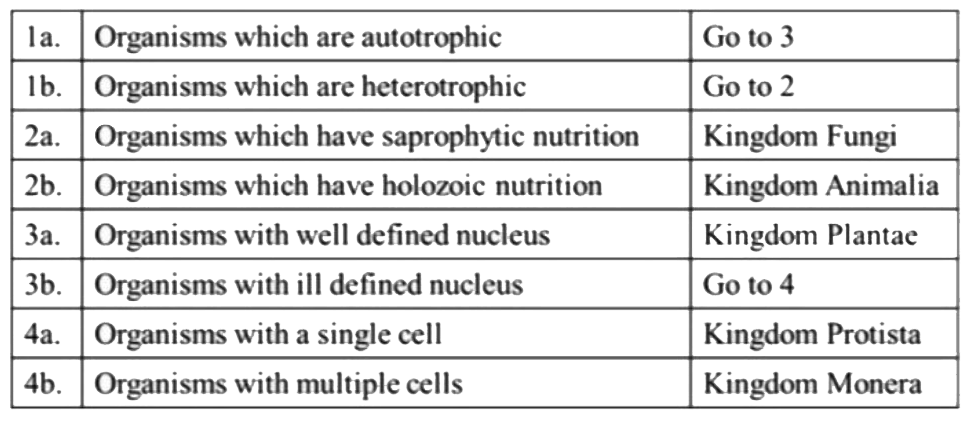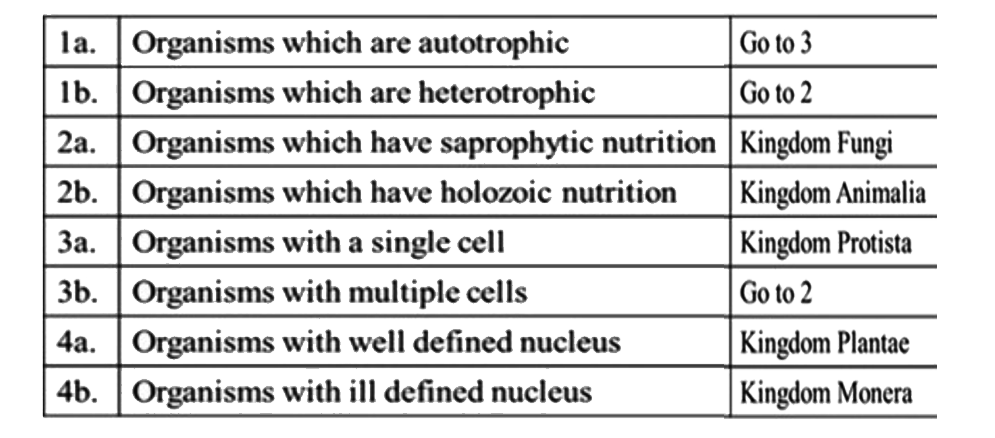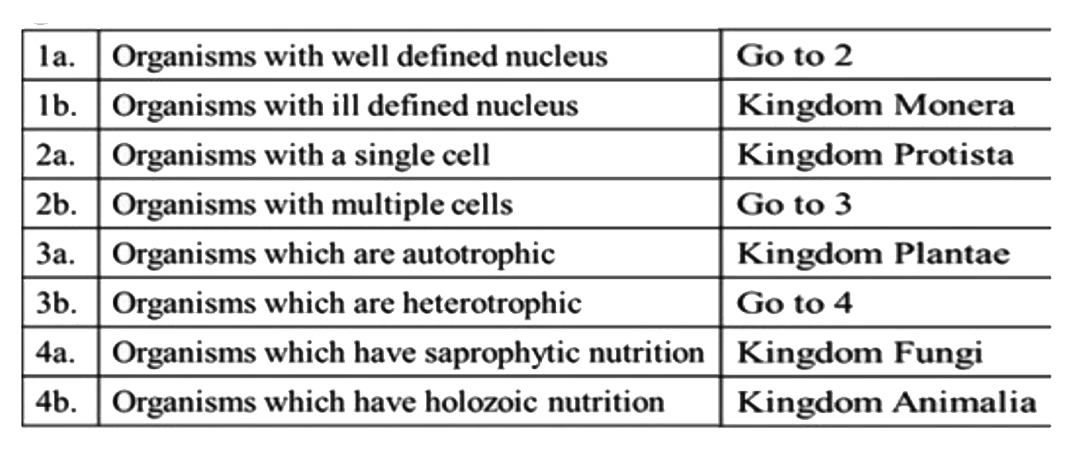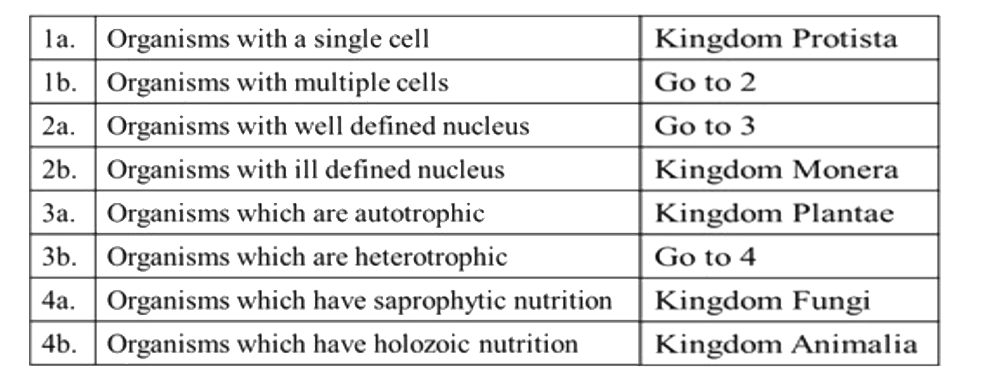Which of the following bracketed keys correctly describes the Whittaker's five kingdom classification ?




The correct Answer is:D
To solve the question regarding Whittaker's five kingdom classification, we will break down the classification into its components and analyze each kingdom according to the characteristics described.
1. Understanding the Five Kingdoms:
- Whittaker's classification divides living organisms into five kingdoms: Monera, Protista, Fungi, Plantae, and Animalia.
2. Identifying Characteristics of Each Kingdom:
- Monera: This kingdom includes all prokaryotic organisms, which are unicellular and lack a true nucleus. Examples include bacteria.
- Protista: This kingdom consists of eukaryotic organisms, primarily unicellular, that do not fit into the other kingdoms. Examples include protozoa and some algae.
- Fungi: This kingdom includes multicellular and unicellular organisms that are heterotrophic (saprophytic) and have cell walls made of chitin. Examples include molds and mushrooms.
- Plantae: This kingdom consists of multicellular, autotrophic organisms that perform photosynthesis and have cell walls made of cellulose. Examples include flowering plants and ferns.
- Animalia: This kingdom includes multicellular, heterotrophic organisms that do not have cell walls and obtain food by ingestion (holozoic). Examples include mammals, birds, and insects.
3. Analyzing the Options:
- The question asks which option correctly describes the Whittaker's five kingdom classification. Each option will need to be evaluated based on the characteristics outlined above.
4. Correct Option:
- After analyzing the characteristics of each kingdom, the correct option that accurately represents the classification is option C. This option correctly identifies:
- Monera as unicellular and prokaryotic.
- Protista as unicellular and eukaryotic.
- Fungi as multicellular and heterotrophic.
- Plantae as multicellular and autotrophic.
- Animalia as multicellular and heterotrophic.
Conclusion:
The correct answer to the question is option C, as it accurately describes the Whittaker's five kingdom classification.
- Whittaker's classification divides living organisms into five kingdoms: Monera, Protista, Fungi, Plantae, and Animalia.
- Monera: This kingdom includes all prokaryotic organisms, which are unicellular and lack a true nucleus. Examples include bacteria.
- Protista: This kingdom consists of eukaryotic organisms, primarily unicellular, that do not fit into the other kingdoms. Examples include protozoa and some algae.
- Fungi: This kingdom includes multicellular and unicellular organisms that are heterotrophic (saprophytic) and have cell walls made of chitin. Examples include molds and mushrooms.
- Plantae: This kingdom consists of multicellular, autotrophic organisms that perform photosynthesis and have cell walls made of cellulose. Examples include flowering plants and ferns.
- Animalia: This kingdom includes multicellular, heterotrophic organisms that do not have cell walls and obtain food by ingestion (holozoic). Examples include mammals, birds, and insects.
- The question asks which option correctly describes the Whittaker's five kingdom classification. Each option will need to be evaluated based on the characteristics outlined above.
- After analyzing the characteristics of each kingdom, the correct option that accurately represents the classification is option C. This option correctly identifies:
- Monera as unicellular and prokaryotic.
- Protista as unicellular and eukaryotic.
- Fungi as multicellular and heterotrophic.
- Plantae as multicellular and autotrophic.
- Animalia as multicellular and heterotrophic.
The correct answer to the question is option C, as it accurately describes the Whittaker's five kingdom classification.
Topper's Solved these Questions
Similar Questions
Knowledge Check
Whittaker proposed 5-kingdom classification in
A1969B1959C1978D1988Select the correct option regarding Whittaker's five kingdom classification .
AIf differentiates between heterotrophic fungi and autotrophic green plants.BChlamydomonas and Mushroom were placed together in algaeCParamecium and Chlorella were placed in same kingdomDBoth (A) and (C)Five kingdom classification was based on
ACell structureBThallus organisationCMode of NutritionDAll of the above
Who proposed the five kingdom of classification?
View SolutionIn which year Robert H. Whittaker proposed five kingdom classification ?
View SolutionWhich one of the following pairs was excluded from Whittaker's five kingdom classification?
View SolutionWhat were the main features selected for Whittaker's five-kingdom classification?
View SolutionWhich of the following characters served as the criteria for five kingdom system of classification as used by R.H. Whittaker?
View Solution